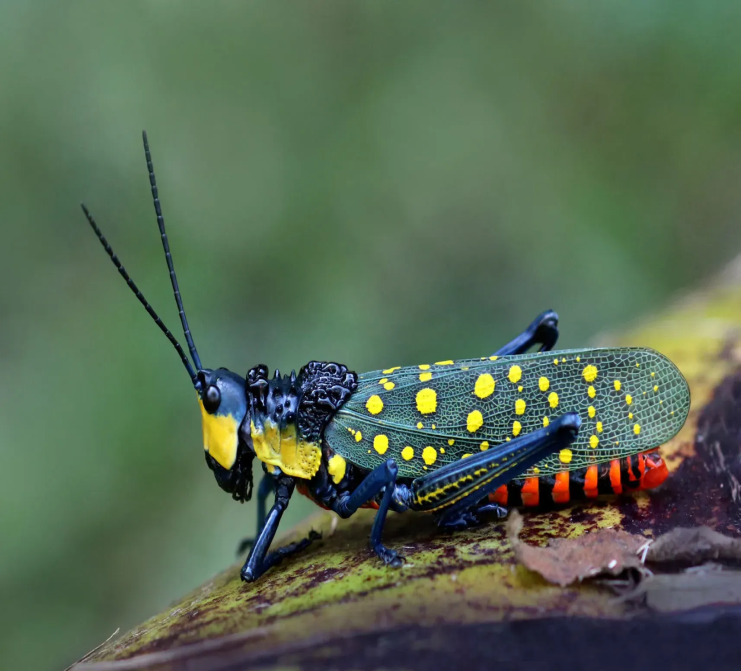Spotted Locust Infestation Threatens Kerala’s Agricultural Lands
Why in the news?
Farmers in Idukki, Kerala, are facing significant agricultural challenges due to the Spotted Locust infestation, which is damaging crops and raising concerns about food security in the region.
About the Infestation :
- Farmers in Idukki, Kerala, are struggling with a significant infestation of the Spotted Locust (Aularches miliaris).
- This colourful grasshopper, indigenous to South and Southeast Asia, thrives in agricultural and forested areas.
Physical Description
- The Spotted Locust features a striking appearance:
- Dark blue head and thorax adorned with yellow bands.
- Red abdomen with black bands.
- Green-brown wings decorated with yellow spots.
- Its vibrant colours serve as a warning to potential predators.
Agricultural Impact and Behavior:
- As an herbivore, the Spotted Locust primarily feeds on the leaves of host plants, making it a threat to crops.
- Despite its slow movement, the locust poses a considerable risk to agriculture, leading to concerns among local farmers.
- When threatened, the Spotted Locust releases a toxic foam, enhancing its defence mechanisms.
- Its ability to evade predation due to its bright coloration and toxic foam further complicates management efforts, contributing to the agricultural challenges in the region.
Key Facts about Spotted Locust?
- Spotted Locust: A colourful grasshopper from the Pyrgomorphidae family, found in South and Southeast Asia.
- Scientific Name: Aularches miliaris.
- Habitat: Found in agricultural and forest areas on bushes or grasses.
- Features: Dark blue head and thorax with yellow bands, red abdomen with black bands, green-brown wings with yellow spots.
- Defence: Bright colours deter predators; releases toxic foam when threatened.
- Movement: Slow-moving, jumps low, doesn’t fly.
Sources Referred:
PIB, The Hindu, Indian Express Hindustan Times




